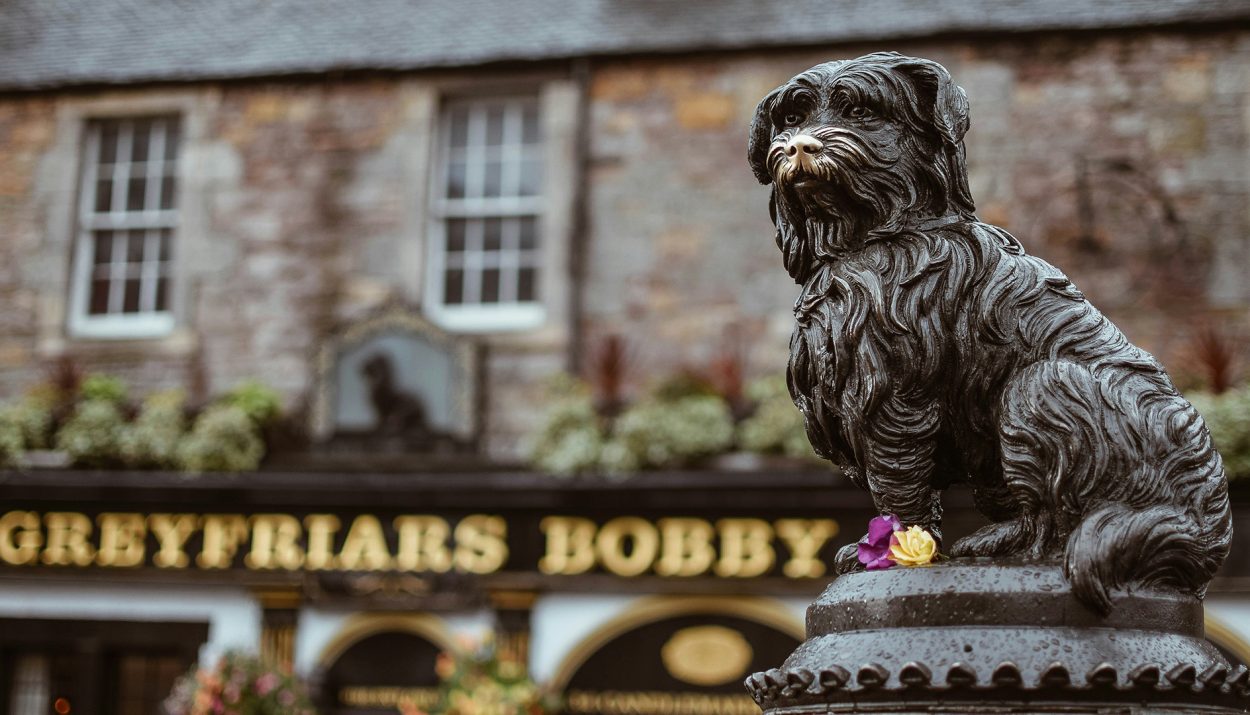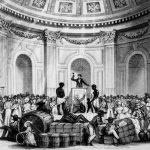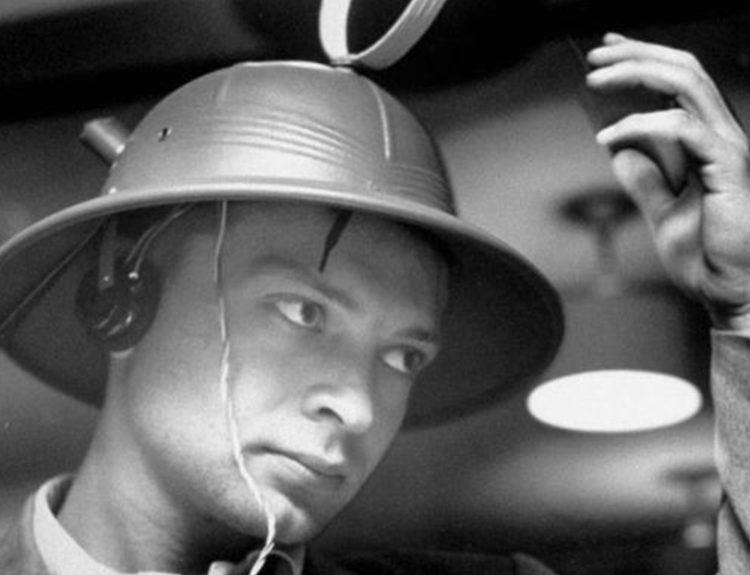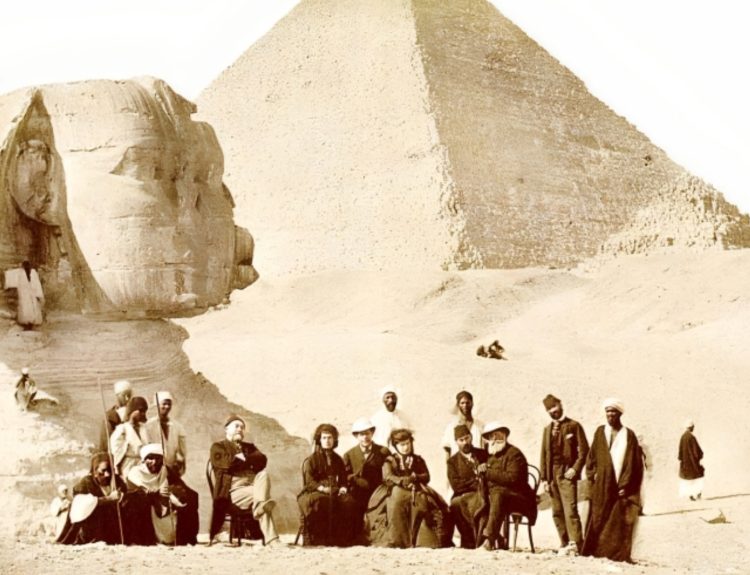The bond between humans and dogs is certainly special, as any dog owner will tell you. Dogs are furry balls of pure, unconditional love and devotion. They are much, much smarter than we give them credit for and have an uncanny knack for showing us how to be better people. Stories of the unwavering bond between a dog and its person have a way of pulling at our heartstrings. This story is an example of this. Once you learn the tale of Greyfriar’s Bobby, a loyal friend and beloved companion, you will want to give your own dog a few extra belly scratches. What makes this dog tail even more special is that it is absolutely true.
John Gray, an Out-of-Work Gardener
A gardener by trade, John Gray, moved his family – which included his wife, Jess, and his young son, John Jr. – to Edinburgh, Scotland, in 1850. He pounded the pavement in search of a gardening job, but to no avail. He had a family to support and no income.
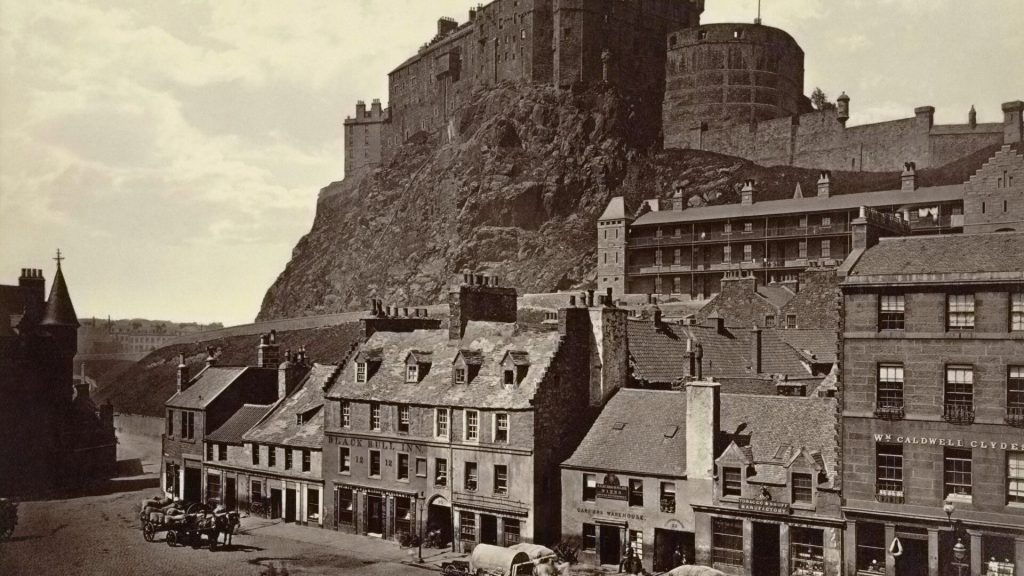
In the mid-19th century, there were no assistance programs to help the Gray family until John could secure employment. There was no unemployment insurance, no job training initiatives, and no job placement services. Poor John Gray was desperate.
A Night Watchman
Since he couldn’t find work in the field he was training in – gardening – John Gray sought out other types of jobs. He still had little luck. When he assessed the situation, Gray realized he had only two options.
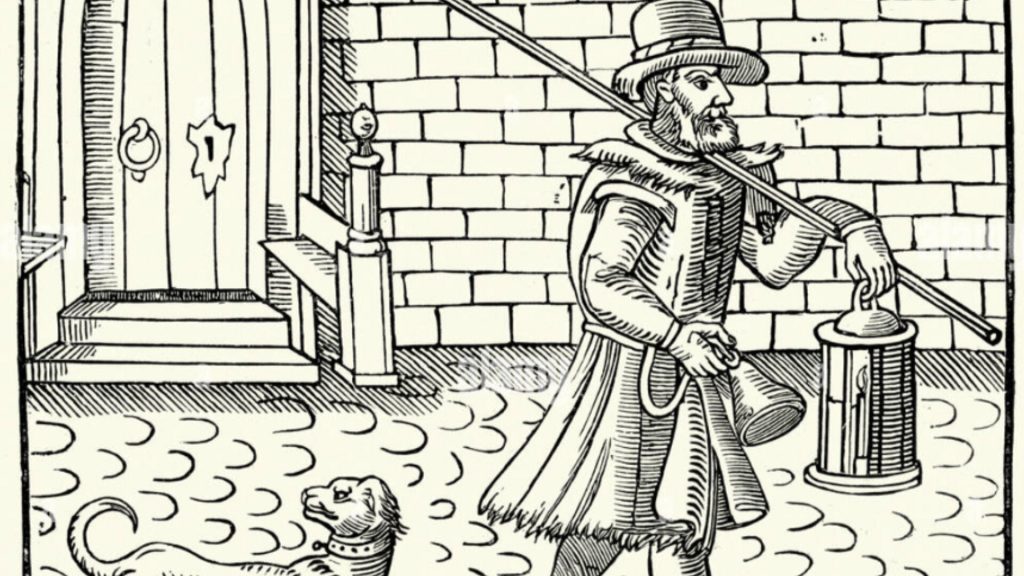
One option was to join a workhouse. In 19th century Scotland, workhouses offered poor people housing and a couple hot meals a day in exchange for working odd jobs. But Gray had a family, so he turned to his second option – a position as a night watchman with the Edinburgh Police Force. He accepted the night watchman job.
The Night Watchman’s Side Kick
John Gray’s job was to walk the streets of Edinburgh every night. From sundown to sunup, he patrolled the streets, keeping an eye out for trouble, but mostly acting as a deterrent to keep crime at bay.
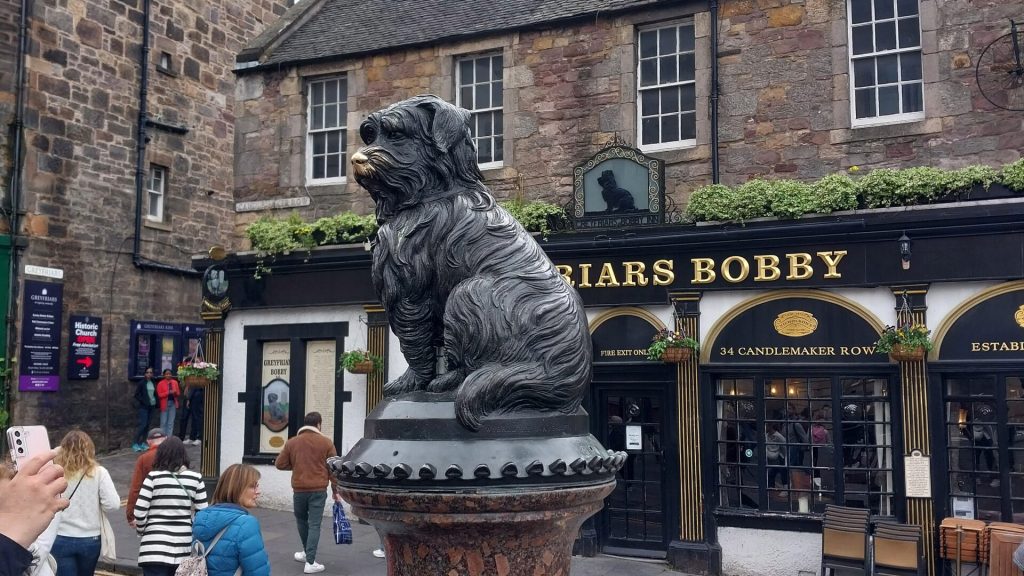
Gray was only at his job for a few weeks when a little stray dog, a young Skye terrier pup, made himself the night watchman’s unofficial sidekick. The little dog quickly became Gray’s constant companion.
Bobby!
John Gray named the little terrier “Bobby.” It could be that he simply liked the name “Bobby,” which was quite common in those days. But it is also likely that the source of the name came from Robert Peel.
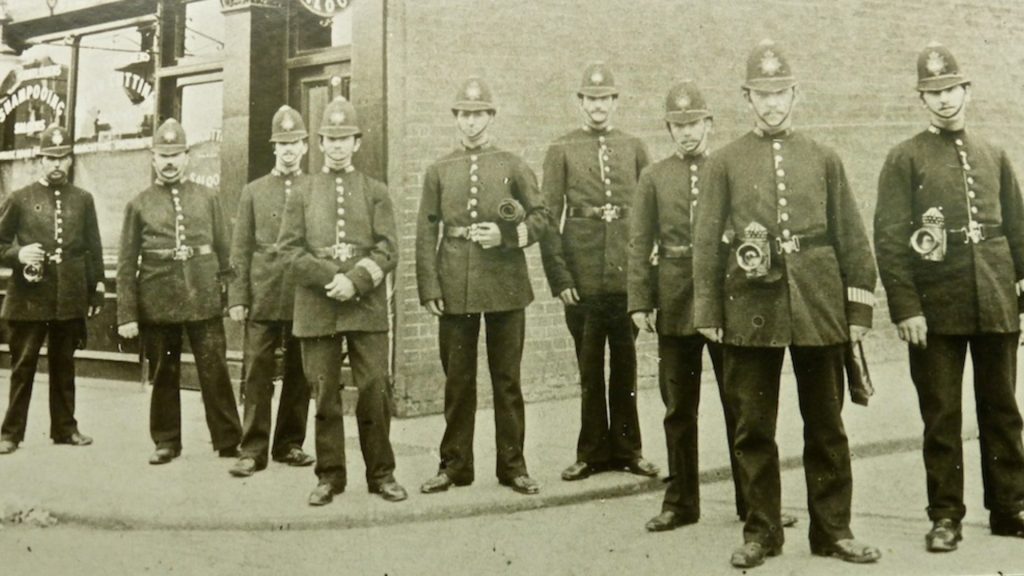
In 1829, Robert Peel started London’s first police force, headquartered at Scotland Yard. He hired hundreds of men to serve as constables, or patrolmen, but the people of London had a different name for them – bobbies! In fact, a “bobbie” became synonymous with a police patrolman … which perfectly described John Gray’s trusty watchdog.
A Fixture in the City
John Gray and Bobby patrolled every inch of Edinburgh. They became a fixture of the community and the citizens of the city got used to seeing the friendly night watchman and his darling little pup.

Bobby demonstrated a tremendous work ethic. He never missed a shift. He remained at John Gray’s side through the heat of summer and the bitter cold of winter, in driving rain and in blinding snow. Gray often stopped to chat with friendly faces on the street and it was not uncommon for folk to offer Bobby a bit of bread and a pat on the head.
A Loving Companion Until the End … and then Some
John Gray worked as a night patrolman for several years until he fell ill. The Police Surgeon of Edinburgh diagnosed him with tuberculosis, a lung disease with a very high death rate.
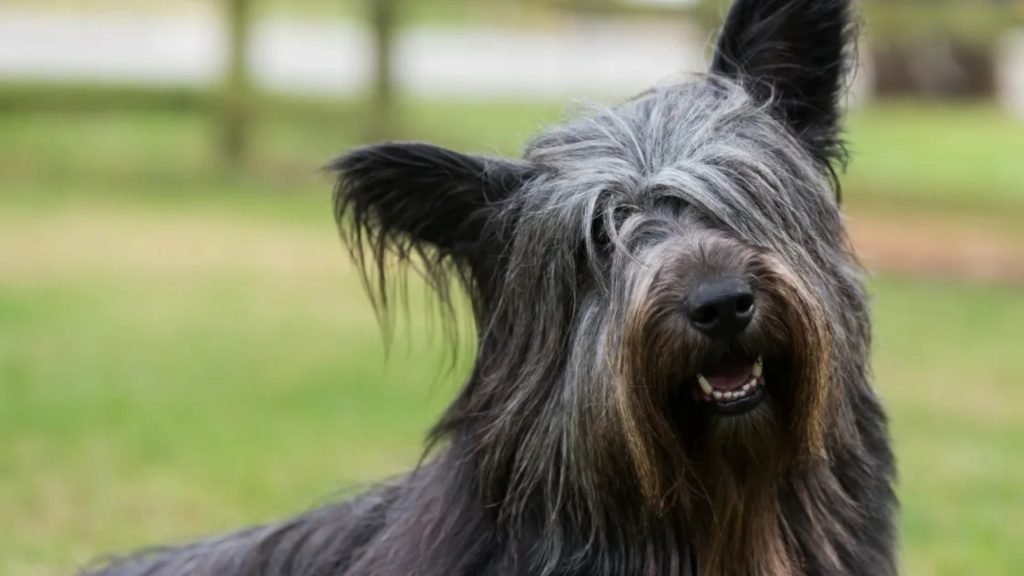
As Gray languished through his progressively worsening illness, Bobby remained at Gray’s side. That’s where he was on February 15, 1858, when John Gray died. The night watchman was buried in Greyfriars Kirkyard.
Forever Faithful
Bobby attended John Gray’s funeral, as did many of the residents of Edinburgh. After the funeral service, however, the faithful little terrier remained at Gray’s grave. He simply refused to leave. Ever.
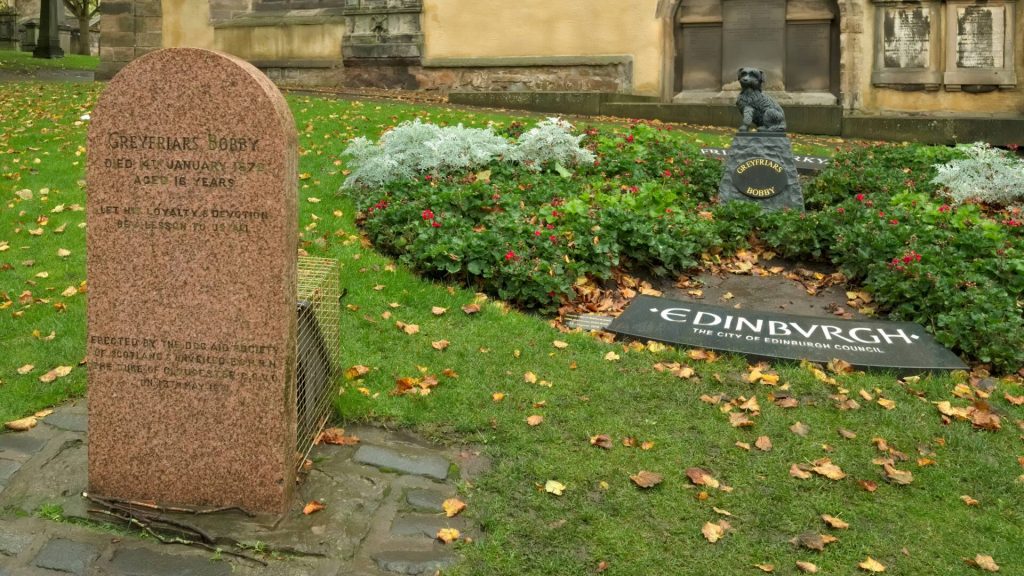
Day after day, week after week, Bobby remained at Gray’s grave. The only times he left his best friend’s side was to eat and do his business. Bobby even slept atop the grave, a gesture that tugged at the heartstrings of the people of Edinburgh.
Bobby Kept Coming Back
The groundskeepers of Greyfriar’s Kirkyard physically removed Bobby many times, but the devoted little pup kept coming back. Bobby wouldn’t leave Gray’s grave even to seek shelter from adverse weather. It broke the hearts of folks to see Bobby guarding his best friend’s grave in pouring rain and frigid cold.
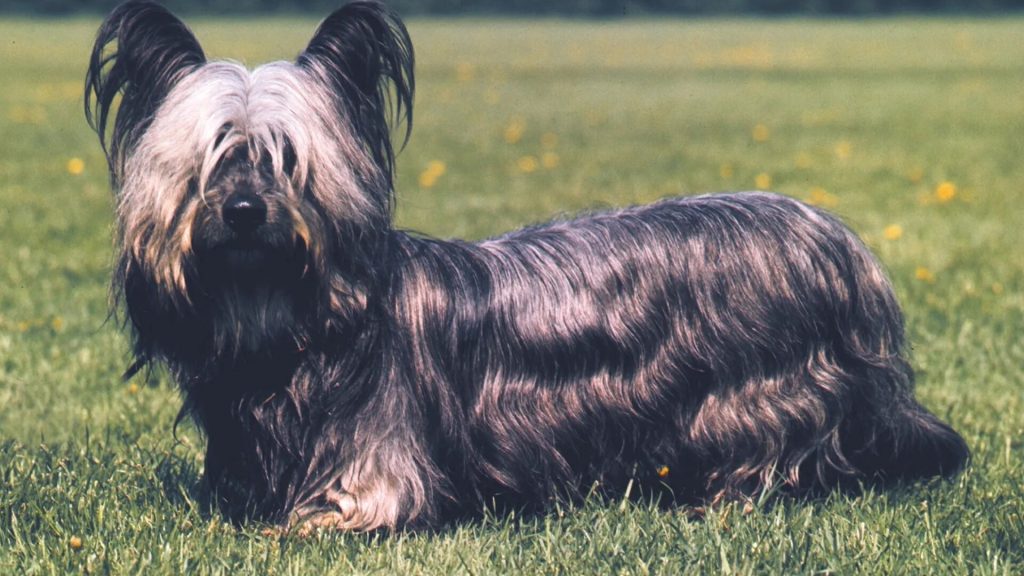
Finally, the groundskeepers of Greyfriar’s Kirkyard could take it no more. If they couldn’t get the dog to leave, at least they could do was to make him comfortable. They built a small shelter for Bobby at the side of John Gray’s grave.
Bobby, the Most Famous Dog in Edinburgh
Bobby’s heartwarming loyalty and dedication touched people across the city. Bobby, however, was a creature of habit. When the one o’clock whistle blew – a city-wide signal that alerted factory workers to their lunchtime break – Bobby knew it was time for his lunch, too.
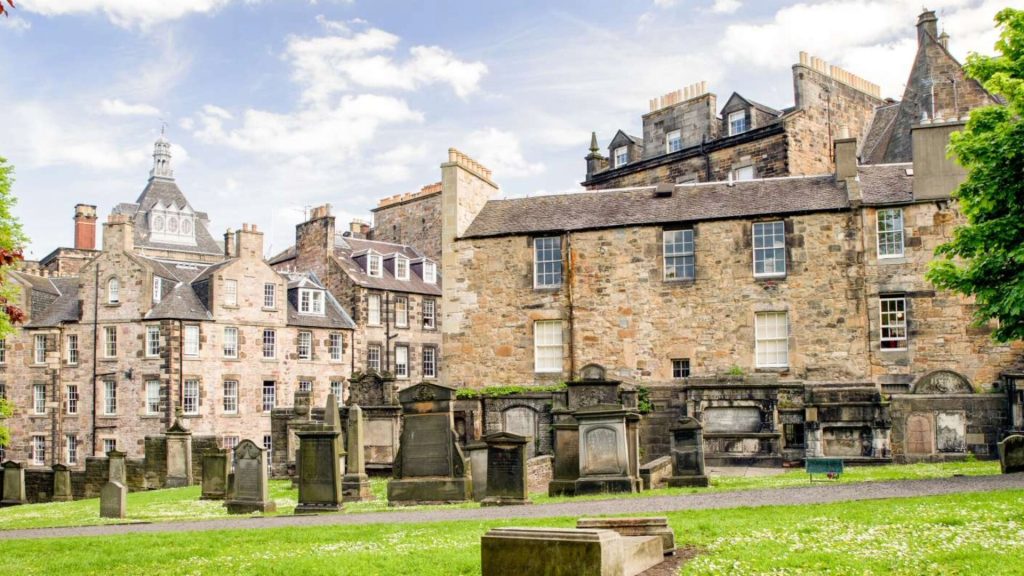
Edinburgh residents flocked to the gate of Greyfriar’s Kirkyard ahead of the one o’clock whistle so they could watch the little pup momentarily leave his best friend’s side. Bobby always knew where to go for lunch.
A New Friend?
Prior to his death, John Gray and Bobby often frequented a coffee house in Edinburgh. This was a place that was familiar to the little dog … a place where he was often given food. After Gray’s death, Bobby still visited the coffee house, looking for a treat.
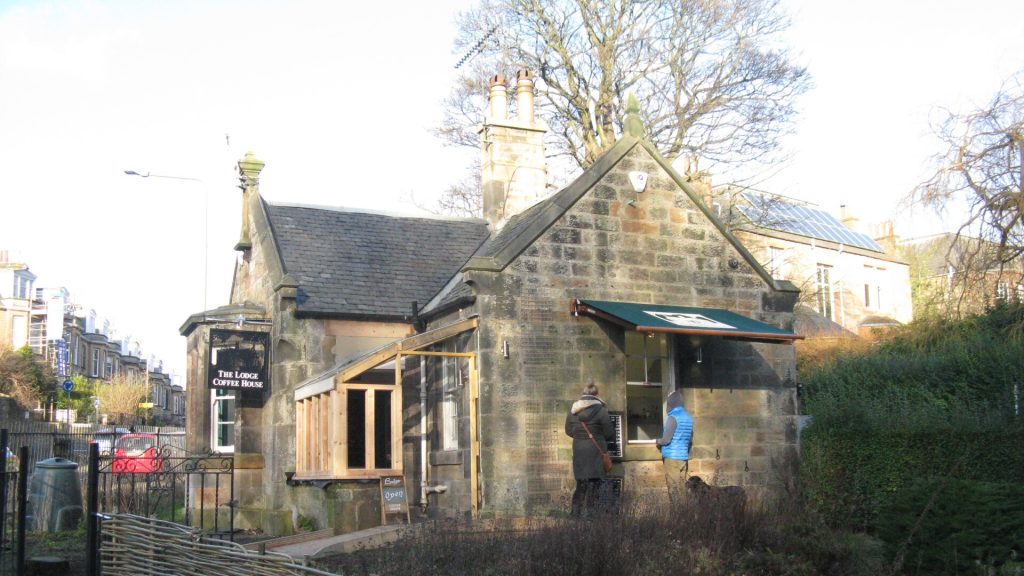
One of the coffee house regulars, a local cabinet maker named William Dow, spoke kindly to Bobby and shared his sandwiches. Soon, Bobby began walking to the coffee house with Dow every day for lunch. Bobby may have found a new friend in Dow, but he remained devoted to John Gray.
A New Law Put Bobby in Danger
In 1867, Edinburgh passed a law to address the problem of stray dogs in the city. The law required all dogs to be licensed with the city. Dogs without a license would be rounded up and destroyed. As an unlicensed stray, Bobby could have been captured by the dog catcher and killed. It didn’t matter if he was the most famous stray dog in the city.

Sir William Chambers, the Lord Provost of Edinburgh, was a dog lover and was touched by Bobby’s tremendous loyalty. He paid for Bobby’s dog license. He went one step further by giving the little terrier a collar to wear that included a small brass plate with an inscription reading “Greyfriar’s Bobby from the Lord Provost 1867 licensed.” This collar is now on display at the Museum of Edinburgh.
Bobby’s Long Watch Was Over
A devoted companion, he kept a constant watch over his best friend’s final resting place. Incredibly, Bobby remained at John Gray’s grave side for fourteen years. Bobby had a warm, dry shelter at the graveyard.

The groundskeepers at Greyfriar’s Kirkyard, along with William Dow, Sir William Chambers, and the citizens of Edinburgh made sure that Bobby was well fed and cared for. In 1872, Bobby crossed the rainbow bridge and rejoined John Gray to patrol the streets of heaven.
A Lesson to Us All
One year later, the president of the local ladies committee, Baroness Angelia Georgina Burdett-Coutts, another dog lover, had an idea. She requested permission for a monument to be placed in Greyfriar’s Kirkyard to commemorate Edinburgh’s most famous and more loyal dog. The city agreed.
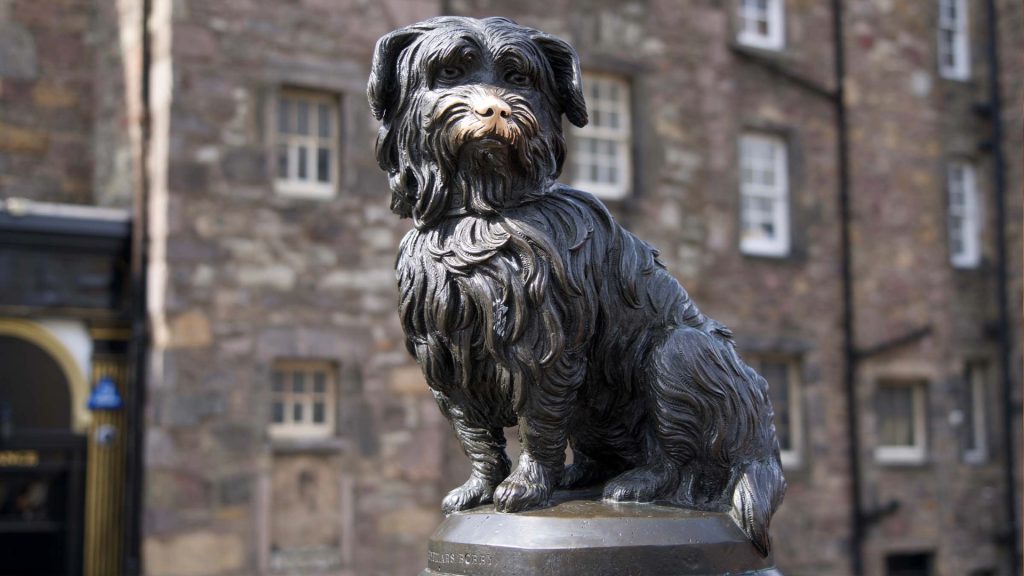
The Baroness commissioned artist William Brody to sculpt a life-size statue of Bobby. The statue – Edinburgh’s smallest public statue – was placed atop a granite fountain. The monument was erected in November 1873. The plaque on the monument reads, “Greyfriar’s Bobby – Died 14th January 1872 – aged 16 years – Let his loyalty and devotion be a lesson to us all.”

